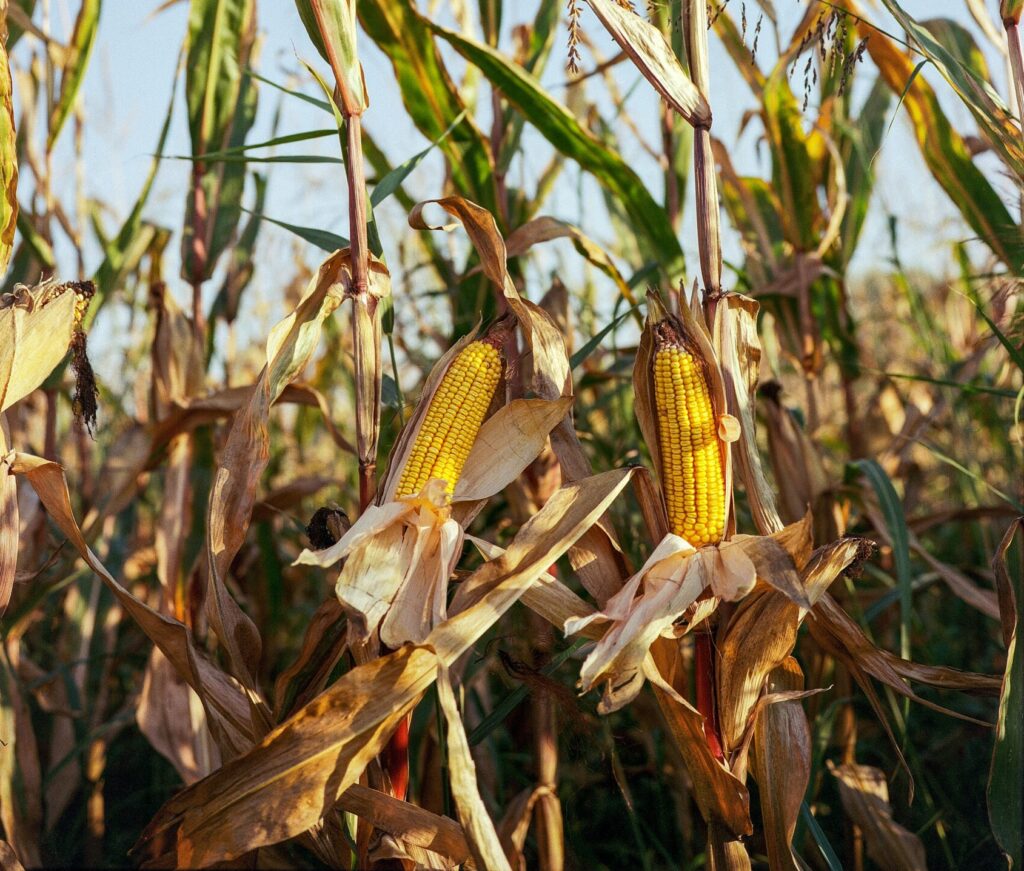Harvesting corn effectively requires attention to crop maturity, weather, and harvesting equipment to maximize yield and grain quality. Here are the key techniques and considerations for efficient corn harvesting.
1. Harvest Timing
The ideal time for corn harvest is when kernels reach optimal moisture levels, typically between 15% to 20%. Harvesting at this moisture level reduces the risk of kernel damage and minimizes drying costs. Field corn, commonly used for grain and silage, is harvested later in the season, while sweet corn is picked earlier for fresh market sales when kernels are still tender.
- For grain corn: Harvest occurs once the crop has reached full maturity, allowing for the highest starch accumulation in kernels.
- For silage: Corn is harvested earlier, around 60-70% moisture, to ensure high fiber and energy content.
2. Harvesting Equipment
Using the right equipment is essential for efficient and safe harvesting. The main types include:
- Combine Harvesters: Combine harvesters are widely used in modern corn farming. They allow for efficient, large-scale harvesting by cutting the plant, removing the kernels, and separating them from the cob. Many combines have adjustable settings to suit different corn varieties and moisture conditions, helping to minimize kernel damage and loss.
- Forage Harvesters: For corn grown as silage, forage harvesters chop the entire plant into small pieces for animal feed. These harvesters cut corn at ground level and process it directly into silage trailers for transport and storage.
- Ear Pickers: Some farmers still use corn pickers for small-scale harvesting. These machines remove ears from the stalk and leave them whole for further processing. Though less common today, ear pickers are an economical option for smaller fields.
3. Techniques for Reducing Kernel Damage
To maintain grain quality, proper harvester adjustments are key. Here are some ways to reduce kernel damage:
- Adjusting the Speed: Setting the appropriate rotor and fan speed in a combine harvester minimizes kernel cracking. Lower speeds are recommended for dryer kernels to reduce impact damage.
- Maintaining Proper Clearance: Adjusting the concave clearance ensures that kernels are separated effectively without excessive breakage. Tighter clearance can help thresh kernels, but should be balanced to avoid grinding or damaging them.
- Monitoring and Adjusting in Real Time: Monitoring the quality and amount of grain being harvested allows for adjustments in real-time to respond to changing field conditions.
4. Manual Harvesting
While labor-intensive, manual harvesting is still practiced in some regions, especially in areas with small farms or where machinery is unavailable. Farmers use hand tools to cut and stack stalks, which are later processed. Manual harvesting allows for selective picking, which is advantageous in fields with varying maturity rates but is not as time-efficient.
5. Drying and Storage Post-Harvest
Once harvested, corn must be dried and stored properly to prevent spoilage. After harvesting, grain corn is typically dried to around 13%-15% moisture for safe storage. Common drying methods include:
- Natural Air Drying: In regions with dry climates, corn can be naturally air-dried in bins with ventilation.
- Heated Air Drying: For large-scale operations, heated air dryers reduce moisture quickly, which is especially useful in humid climates.
Proper storage conditions, with good ventilation and pest control, are essential for maintaining quality during long-term storage.
Conclusion
Efficient corn harvesting involves choosing the right timing, using appropriate harvesting equipment, and ensuring minimal kernel damage. Post-harvest drying and storage are equally critical to preserve grain quality and yield. By following these practices, farmers can ensure a successful and sustainable corn harvest.
















